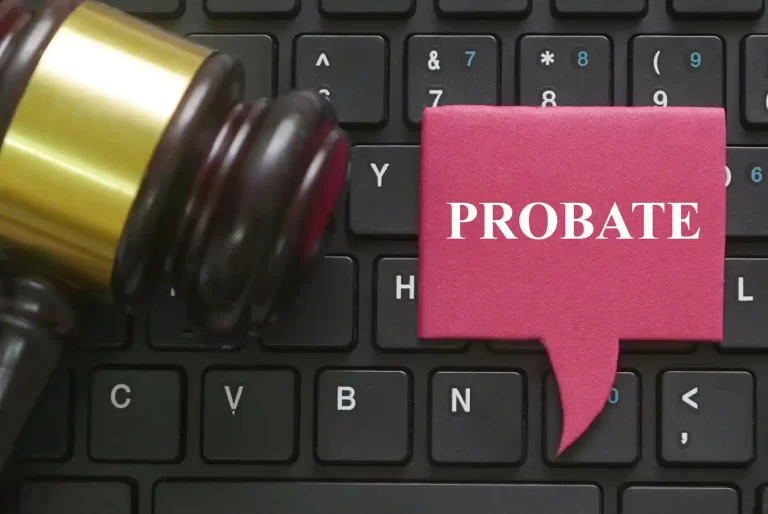By Jason Mizak
Estate planning ensures your assets pass smoothly to loved ones, and for homeowners in Ohio, a Transfer on Death Designation Affidavit (TOD) is one of the simplest ways to transfer real estate without going through probate. This legal document allows property to pass directly to beneficiaries, avoiding the delays and expenses of probate court.
What Is a Transfer on Death Designation Affidavit?
A Transfer on Death Designation Affidavit (TOD) is a legal tool that allows Ohio property owners to name a beneficiary who will inherit their real estate when they pass away. Unlike a Last Will and Testament, which requires probate court involvement, a TOD completely bypasses probate, making the transfer faster and easier.
| At Mizak & Pacetti, we help Ohio residents create estate plans that protect their families and property. Whether you own a home in Parma, Cleveland, or anywhere in Cuyahoga County, a TOD can make your estate plan more efficient and give you peace of mind. Schedule a free consultation today! |
This option is especially useful for Ohio homeowners who want to pass down property to family members without legal complications. A TOD applies to all types of real estate, including:
- Single-family homes
- Condos and townhomes
- Multi-family properties
- Vacant land

Why Use a TOD in Ohio?
A Transfer on Death Affidavit (TOD) is one of the simplest ways to protect your real estate and ensure a hassle-free transfer to your heirs. Whether you’re a homeowner in Parma, Ohio, or anywhere in the state, a TOD can help you avoid legal delays and unnecessary costs while keeping full control of your property. Here’s why a TOD is a valuable estate planning tool:
✔ Avoids Probate – Property transfers directly to beneficiaries without court delays.
One of the biggest benefits of a TOD affidavit is that it allows real estate to transfer outside of probate, meaning your beneficiaries won’t have to go through the time-consuming legal process after your passing. Instead of waiting months or even years for probate to be completed, your heirs can take ownership quickly—often within weeks of filing the necessary paperwork. This ensures they have access to the property without dealing with complicated court proceedings.
✔ You Retain Full Ownership – Your beneficiary has no rights until your passing.
Unlike some estate planning tools, a TOD allows you to keep complete control over your property while you’re alive. Your named beneficiary does not have any ownership rights until after your death, meaning you can sell, refinance, rent, or change your mind at any time. This flexibility makes it an excellent option for homeowners who want to plan ahead without giving up control.
✔ Lower Costs – A TOD is an affordable alternative to a trust.
Many people turn to revocable living trusts to avoid probate, but trusts can be expensive and complicated to set up. A Transfer on Death Affidavit provides a low-cost alternative for homeowners who simply want to ensure a smooth transfer of their property. Since a TOD only requires a notarized document and a small filing fee, it’s one of the most cost-effective ways to protect real estate in Ohio.
✔ Easy to Change – Update or revoke it anytime if your plans change.
Life circumstances can change, and a TOD gives you the flexibility to update or cancel the affidavit whenever needed. If you decide to name a different beneficiary or remove the designation altogether, you can simply file a new TOD or a revocation form with the county recorder’s office. There’s no need for complicated legal processes or court involvement.
✔ Less Stress for Family – Your heirs avoid the legal headaches of probate.
Probate can be a stressful, emotionally draining process for families, especially while grieving. Legal paperwork, court hearings, and delays can make inheriting property far more complicated than necessary. A TOD eliminates these issues by streamlining the inheritance process, ensuring that your home transfers to your loved ones without unnecessary legal burdens.
How to Create a Transfer on Death Designation Affidavit in Ohio
Setting up a TOD affidavit is straightforward, but it must meet legal requirements to be valid. Here’s how it works:
1. Draft the Affidavit
- Include your full legal name and property description (as listed on your deed).
- List the full name(s) of your beneficiary or beneficiaries.
2. Sign in Front of a Notary
- Ohio law requires notarization for the affidavit to be legally binding.
3. Record with the County Recorder
- File the notarized document at the Cuyahoga County Recorder’s Office if your property is in Parma, Ohio.
Once recorded, the TOD remains inactive until your passing. Your beneficiary will need to file a death certificate and a simple affidavit with the county to complete the transfer.
Errors in wording, notarization, or filing can invalidate the document, so working with an experienced estate planning attorney is essential.
What Happens If You Don’t Have a TOD?
If you don’t have a TOD or another probate-avoidance strategy, your real estate must go through probate before your heirs can take ownership. This can lead to:
🚨 Long Wait Times – The probate process in Ohio can take anywhere from several months to multiple years, depending on the complexity of the estate and court backlog. During this time, your heirs may be unable to access or sell the property, which can create financial strain. A Transfer on Death Designation Affidavit (TOD) allows your real estate to pass directly to beneficiaries, eliminating probate delays.
💰 High Costs – Probate comes with court fees, attorney expenses, and executor costs, which can significantly reduce the value of your estate. In some cases, legal fees alone can cost thousands of dollars, leaving your beneficiaries with less than expected. By using a TOD affidavit, you can transfer your home to loved ones without these unnecessary expenses.
🔍 Public Records –Probate proceedings in Ohio are public record, meaning anyone can access details about your estate, assets, and beneficiaries. This lack of privacy can expose family financial matters to unwanted scrutiny or even potential scams. With a Transfer on Death Affidavit, property transfers happen privately, keeping your estate matters confidential.
😟 Unnecessary Stress – Losing a loved one is already emotionally difficult, and probate can add legal complications, delays, and disputes. Family members may have to attend court hearings, file legal paperwork, and wait months before receiving property ownership. A TOD affidavit simplifies the process, ensuring a stress-free property transfer for your heirs.
For Ohio homeowners, a TOD helps avoid these issues and keeps property in the family without court interference.
Who Should Consider a TOD Affidavit?
A Transfer on Death Designation Affidavit is ideal for:
🏠 Homeowners who want to avoid probate
📄 People with simple estate plans who don’t need a trust
👪 Parents who want to pass real estate to their children
👴 Retirees looking to streamline their estate planning
Frequently Asked Questions
Can I name more than one beneficiary?
Yes, you can name multiple beneficiaries and even specify ownership percentages (e.g., 60% to one child, 40% to another). If one of your beneficiaries passes away before you, their share will either go to the remaining beneficiaries or be handled according to Ohio law. To avoid complications, it’s a good idea to name a contingent beneficiary in case your primary choice cannot inherit the property.
What happens if I sell my home after filing a TOD?
If you sell or transfer the property during your lifetime, the TOD designation automatically becomes void. The new owner would need to create their own TOD if they wish to transfer the property outside of probate. You do not need to take additional steps to revoke the TOD after selling—once the property is no longer in your name, the designation no longer applies.
Does a TOD override my will?
Yes, a TOD takes precedence over any conflicting instructions in your will. Since a TOD is a non-probate transfer, it does not pass through the probate process where a will would normally be administered. This makes it a more secure and direct way to transfer real estate to your chosen beneficiary.
Can creditors claim property transferred through a TOD?
A TOD does not automatically protect property from creditors or estate debts. If you have unpaid debts at the time of your passing, creditors may be able to file claims against your estate, which could impact the beneficiary’s ability to inherit the property. If you’re concerned about creditor claims, consulting an estate planning attorney can help you explore additional protections.
What if I want to change or cancel my TOD?
You can update or revoke your TOD at any time by filing a new affidavit with the county recorder’s office. If you decide to remove the TOD entirely, you must file a revocation document in the same county where the original TOD was recorded. It’s always a good idea to review your estate plan regularly to ensure it reflects your current wishes.
Why Work with Mizak & Pacetti in Parma, Ohio?
Ohio law has strict requirements for TOD affidavits. A misspelled name, an incorrect property description, or a filing mistake can render the document invalid, forcing your estate into probate.
At Mizak & Pacetti, our Parma, Ohio estate planning attorneys provide:
✔ Personalized estate planning tailored to your needs.
✔ Detailed legal guidance to ensure your TOD is valid.
✔ Assistance with wills, trusts, and probate avoidance.
We understand the unique concerns of Ohio families from protecting multi-generational homes to planning for the future. Whether you need a TOD or a more complex estate plan, we’re here to help.
📞 Call Mizak & Pacetti today at (216) 398-9870 or schedule a free consultation! Let us help you create a plan that protects your home and your family’s future!


